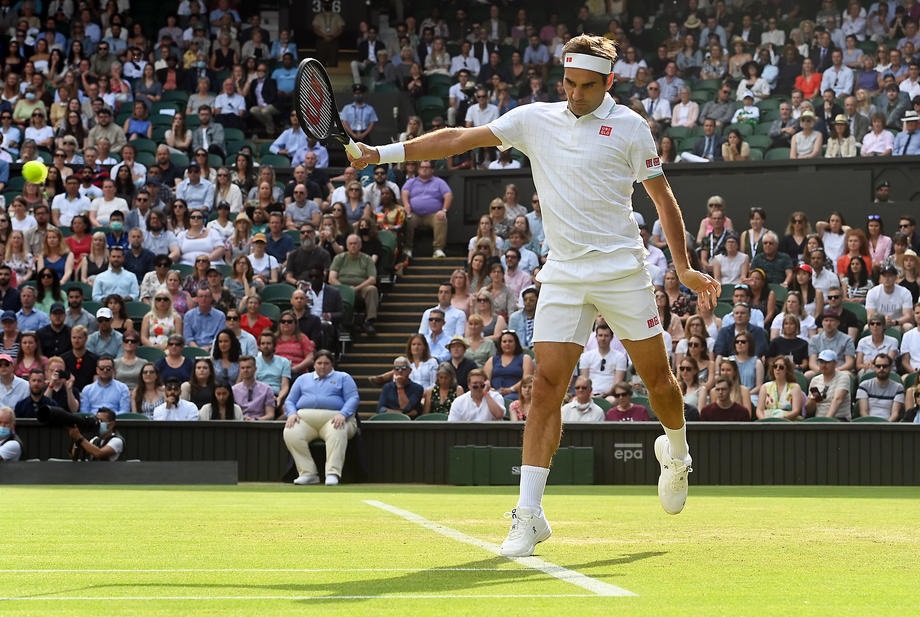- Ricky’s picks for Auckland and Adelaide: Monfils vs. Bergs and Korda vs. Auger-Aliassime
- Australian Open Draws and Order Of Play for Sunday, January 12, 2025
- Adelaide International Draws and Order of Play for Saturday, January 11, 2025
- Solinco Launches All-New Whiteout V2 Racquet
- Frances Tiafoe Signs on as lululemon Brand Ambassador
- Third Season of TennisWorthy Podcast Launches with Patrick McEnroe as New Host
- Adelaide International Draws and Order of Play for Friday, January 10, 2025
- Sinner, Alcaraz on opposite sides of Australian Open draw
- Australian Open Men’s and Women’s Draws for Thursday, January 9, 2025
- Australian Open Qualifying Draws and Schedule for Thursday, January 9, 2025
- Daniil Medvedev is a Father Again!
- Adelaide International Draws and Order of Play for Thursday, January 9, 2025
- Australian Open: Fonseca, Eubanks advance to final round of qualifying
- Alexei Popyrin Signs As Brand Ambassador for Psycho Bunny
- Australian Open Qualifying Draws and Schedule for Wednesday, January 8, 2025
ATP Tennis Finals From Rotterdam • Gael Monfils Beats Stan Wawrinka To WIN In Holland
- Updated: February 23, 2019
Gael Monfils of France after winning the final against Stan Wawrinka of Switzerland at the ABN AMRO World Tennis Tournament in Rotterdam, The Netherlands, 17 February 2019. EPA-EFE/Robin van Lonkhuijsen
By Alix Ramsay
What is wrong with this picture: Stan Wawrinka against Gael Monfils in the final of ABN AMRO World Tennis Tournament in Rotterdam?
The answer (and, no, we are not giving prizes for this one) is simple: nothing. Except that this was supposed to the year when the young lads made their move. After all the upsets and surprises at the Australian Open, popular wisdom had it that – Novak Djokovic apart – the established superstars were on their last legs. Messrs Tsitsipas, Tiafoe, Shapovalov et al were ready to take over the world.
But Shapovalov lost in the Rotterdam quarter-finals, Tsitsipas and Karen Khachanov went out in the first round, Daniil Medvedev lost in the semis while further afield, Tiafoe lost in the second round in New York and even Dominic Thiem, a little older than the newest of the new generation but still a man tipped to build on his French Open final finish last summer, lost in the semi-finals to Diego Schwartzman in Buenos Aires.
So, on Sunday, the two old pals, Stan the Man and La Monf, went toe-to-toe for the $450,000 winner’s cheque. It had not been a bad week for a pair of 30-somethings with gammy knees. Monfils won 6-3, 1-6, 6-2 but in some ways it was a draw: they were both, at last making real strides back towards the top of their games.

Stan Wawrinka of Switzerland during the final against Gael Monfils of France at the ABN AMRO World Tennis Tournament in Rotterdam, The Netherlands, 17 February 2019. EPA-EFE/Robin van Lonkhuijsen
For Stan, it was his first final since having two operations on his left knee in 2017 while for La Monf it was his chance to win his second title in 13 months – and in those 13 months he has struggled through knee, back, hamstring and wrist injuries.
In some ways, players are the worst kind of hypochondriacs. You and I do our backs in over the weekend (note to self: never again volunteer to carry Great Aunt Gert’s suitcase to the station. For a weekend away she packs 48 bottles of cooking sherry, two pairs of flannel knickers and a toothbrush). No matter, we lumber into work on the Monday looking like a battered angle iron and spend the next three weeks in agony. And no one cares, least of all the local doctor. “It’s your own fault – lifting weights like that at your age”.
But the young, super-fit and athletic player feels the slightest twinge in his or her stapedius (no, I don’t know where it is either) and within seconds they have called for a medical time requiring assessment, treatment and a full rub down with a damp chamois. They are precious souls, players.
Then again, the body of a finely honed athlete is not like the body of a bog standard human. They are more your sports car compared to the average family run around that the rest of us drive. The clapped out old banger that does the school run and the shopping trip putters along come rain or shine. Washed when anyone can be bothered and serviced when anyone can remember, it ain’t pretty but it does the job.
The sports car, on the other hand, needs constant attention or it simply won’t work. One Italian supercar, the sort that costs the same as a small house in Dorking, needs to be serviced every three months and to do this involves removing the engine just to change the oil. Without such meticulous tuning the super-light aluminium engine block starts to warp as the engine misfires.
Yet, for all that, the courage and the strength of the great champions defies belief. Wawrinka is only 33 and yet he had the left knee of an old man until the surgeons got to work.
Andy Murray is 31 but his right hip was shot to pieces when he limped away from the Australian Open. With bone grinding on bone, it was a miracle he could stand much less play five sets and more than four hours against Roberto Bautista Agut. Once it was over, he went home and had major surgery to resurface the whole joint with metal. Officially, it is to give him a better quality of life (walking without grimacing would be a major improvement) but unofficially, everyone knows that if there is the merest hint that he can come back, he will bust a gut to do it.
Wawrinka, like Murray, is a three-time grand slam champion. He knows what it is like to be at the very top of the game and yet when his body started to break down, he could only watch as the ranking points slipped away and his hard-won position in the pack was taken away. Now he had to start from scratch. Not that he minded – he knew what was ahead of him if he wanted to get back to doing what he loved and doing it at the level he knew he could achieve.
“You know, when you’re out on the tour because of injury, that for sure your ranking will drop no matter what, because you didn’t play,” he said as he started his comeback last year. “But for me, that’s not the most important. For sure, I’m going to require some wildcard. But again, if I have to play some challenger, I have no problem with that.
“You start to win matches. Simple as that. You practice well and you get your level back and you win matches, and in a few months you’re back up to your level if you play well. That’s as simple as that.”

Gael Monfils of France reacts as he wins the final against Stan Wawrinka of Switzerland at the ABN AMRO World Tennis Tournament in Rotterdam, The Netherlands, 17 February 2019. EPA-EFE/Robin van Lonkhuijsen
Monfils, too, does not mind what he has to do to get back to where he believes he belongs. His week in Rotterdam had seen him take out Medvedev, Goffin, Seppi and Dzumhur before he got to Wawrinka. One of the finest athletes on the tour – when he is fit, which is not as often as he would like – he is not the most mentally secure of competitors. Where others endure the ebbs and flows of matches, he brings with him his very own cyclone which can rage and blast and then simply fizzle out. All in the space of a set. But when his game is on, he can befuddle and bedazzle anyone.
He, too, has spent the past couple of years taking one step forward and then two back thanks to those endless injuries. But at 32, he still has the appetite for battle and hard work.
“I prepared well in the off-season and I am starting to believe that I can get back to the top of the game,” he said on his way to the final.
And that is the problem for the young hopefuls on their way up. They are good – very, very good – but so are the established men they are up against. If it is hard to get to the top, it is even harder to stay there. But to get there, lose your place through no fault of your own and then fight to get it back takes heart, belief and mind-boggling hard work. The likes of Wawrinka and Monfils can play like artists but they can fight like warriors when they have to.
So, there is life in the old boys yet. The young lads may have to wait a while longer to claim their place at the top.






